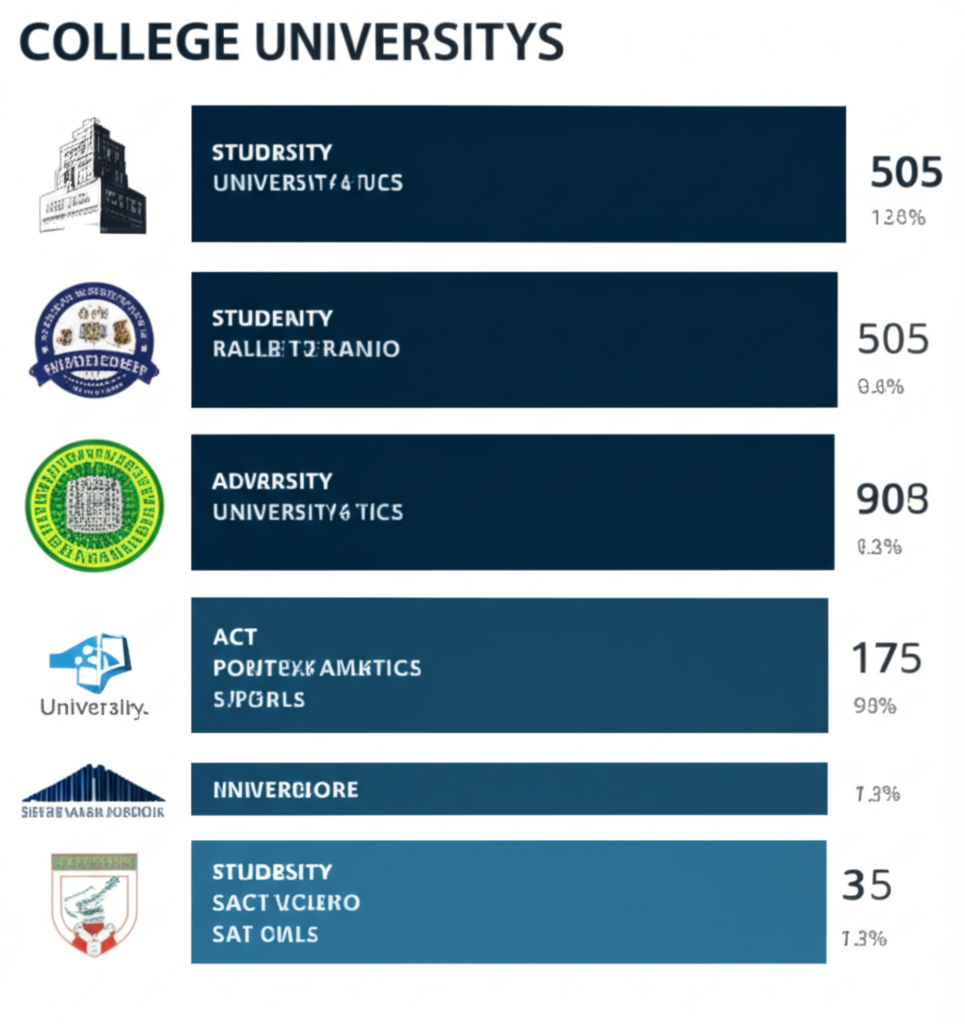The Top 10 Most Popular Colleges
Based on application data from the 2023-24 admissions cycle, these institutions received the highest number of applications from prospective students nationwide.
Most Popular Colleges by Application Volume
| Rank | Institution | Applications Received | Acceptance Rate | Change from Previous Year |
|---|---|---|---|---|
| 1 | University of California, Los Angeles | 174,914 | 9.2% | +8.3% |
| 2 | University of California, Berkeley | 128,226 | 11.4% | +5.7% |
| 3 | University of California, San Diego | 118,372 | 23.8% | +12.1% |
| 4 | New York University | 105,000 | 12.8% | +3.2% |
| 5 | University of California, Irvine | 97,937 | 21.3% | +9.8% |
| 6 | University of Southern California | 80,808 | 9.9% | +1.4% |
| 7 | Harvard University | 61,220 | 3.4% | +7.2% |
| 8 | Stanford University | 56,378 | 3.7% | +4.1% |
| 9 | University of Pennsylvania | 54,588 | 5.8% | +2.9% |
| 10 | Columbia University | 52,823 | 3.9% | -1.2% |
Data compiled from institutional reports and Common Application statistics
UC System Dominance
The University of California system claims five of the top ten spots, reflecting both the system's reputation and California's large population of college-bound students.
What Makes These Schools So Popular?
Several factors contribute to the popularity of these institutions, from academic reputation to location and perceived value.
Key Attraction Factors
- **Academic prestige:** Strong rankings in national publications
- **Location appeal:** Desirable geographic locations, particularly California and major cities
- **Research opportunities:** Extensive undergraduate research programs
- **Alumni networks:** Strong connections to major industries and employers
- **Campus culture:** Vibrant student life and extracurricular opportunities
- **Financial aid:** Generous need-based aid programs
"Students are increasingly drawn to institutions that offer both academic excellence and strong career outcomes. The most popular colleges excel in both areas."
— Dr. Robert Johnson, Director of College Counseling at Phillips Academy
Regional Trends
While California schools dominate the overall rankings, regional preferences show interesting patterns across the country.
Most Popular Colleges by Region
| Region | Most Popular School | Applications | Regional Draw % |
|---|---|---|---|
| West Coast | UCLA | 174,914 | 68% |
| Northeast | NYU | 105,000 | 52% |
| Southeast | University of Florida | 41,237 | 71% |
| Midwest | University of Michigan | 65,021 | 45% |
| Southwest | UT Austin | 53,525 | 78% |
Regional draw percentage indicates proportion of applications from the same region
The Impact of Test-Optional Policies
Many of the most popular colleges have adopted test-optional admissions policies, which has contributed to increased application volumes.
Application Surge
Colleges that went test-optional saw an average 23% increase in applications, with some institutions experiencing increases of over 50%.
What This Means for Students
The popularity of these institutions creates both opportunities and challenges for prospective students.
Advice for Applicants
- **Apply broadly:** Don't rely solely on popular schools
- **Research thoroughly:** Look beyond rankings to find good fits
- **Consider alternatives:** Less popular schools may offer better opportunities
- **Start early:** Popular schools often have earlier deadlines
- **Show genuine interest:** Demonstrate why you want to attend specifically
